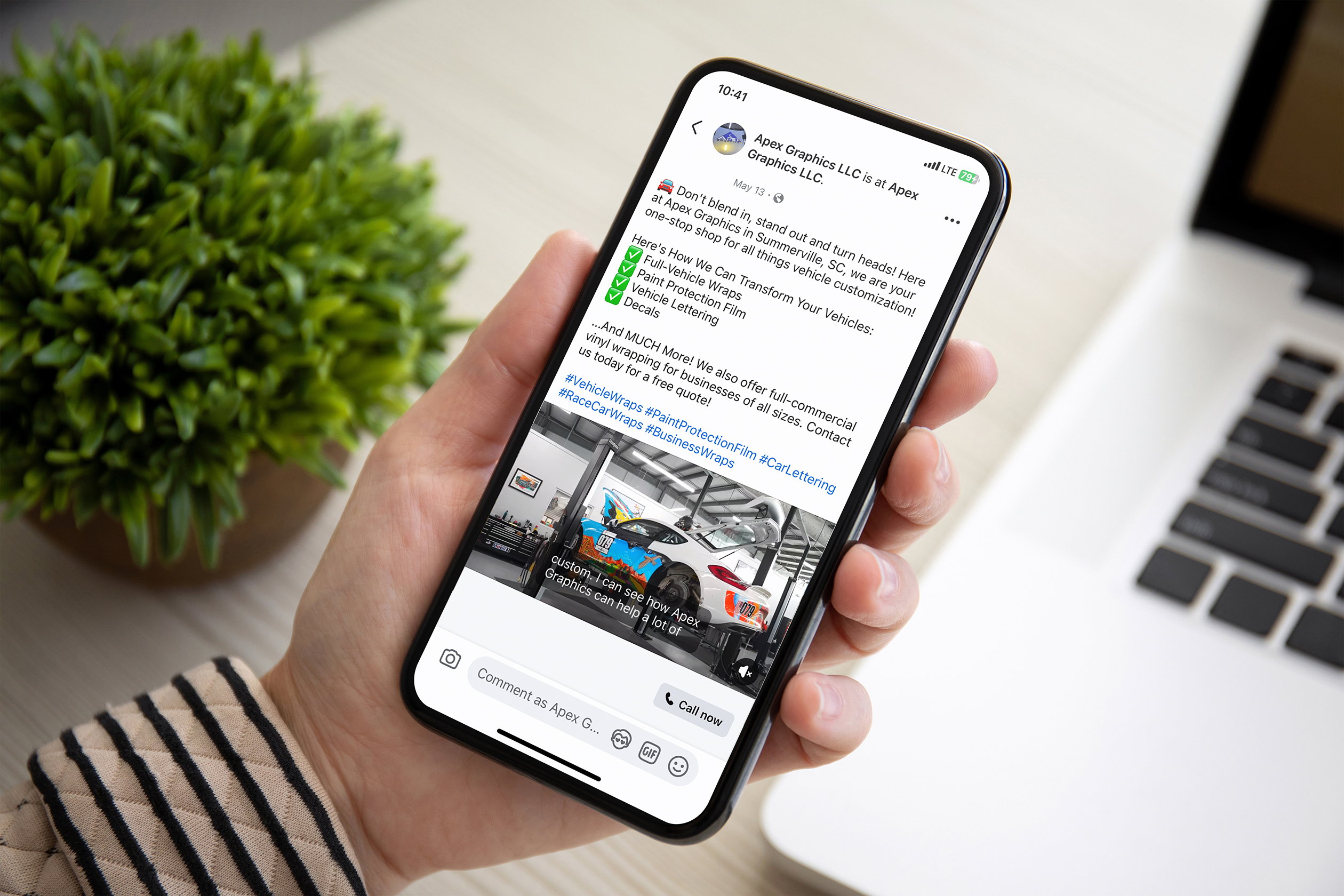One truth has emerged undeniably clear: videos reign supreme over static graphics when it comes to Facebook advertisements and boosted posts. As we push boundaries in the creative marketing space, we need to discuss the reasons videos outperform static images—and address why some businesses are hesitant to make the switch.
Here’s why we believe videos are the future, and why some resist the inevitable change:
1. Engagement Rates: The Video Advantage
It’s no secret that videos receive higher engagement rates compared to static graphics. According to recent studies, video ads on Facebook have a 135% greater organic reach than photo posts. Why? Because Facebook’s algorithm favors engaging content, and videos typically hold a viewer’s attention longer, leading to better rankings in the news feed. More engagement means higher visibility, and that’s why we prioritize video over static content for our clients at Rugglion.
Learn how our video production services at Rugglion Digital Marketing can transform your ad strategy and increase engagement.
2. Visual Storytelling: The Power of Movement
Static graphics may convey a message, but videos tell a story. A well-crafted video grabs attention, evokes emotions, and conveys complex ideas in a more digestible format. The rise of short-form content—think Instagram Reels and TikTok—proves that attention spans are shrinking, but video content still has the power to captivate in just seconds.
Consider a boosted post with a static image versus a video: the image might show a product, but a video can demonstrate how it works, the satisfaction it brings, and user testimonials—all in a few seconds.
According to HubSpot, 72% of customers would rather learn about a product through video content than text. Read more here.
3. Higher Conversion Rates
From our experience at Rugglion Digital Marketing, we’ve found that video ads tend to convert better than static images. Why? Videos trigger more emotional responses, making viewers more likely to take action. Whether it’s signing up for a newsletter, clicking through to a website, or making a purchase, videos guide viewers toward the intended outcome more effectively than a static post.
For example, one of our recent campaigns utilizing video ads for a local business showed a 30% higher conversion rate compared to previous campaigns using static graphics.
4. Videos Aren’t Just Trendy—They’re Backed by Data
For skeptics who believe videos are just a fad, let’s look at the numbers. Facebook has reported that video content is five times more likely to drive engagement than static images. This isn’t just a temporary surge; it’s the future of digital marketing. Yet, some businesses still insist on static ads due to the perception that video production is costly and time-consuming. However, with tools like Canva, Adobe Rush, and professional services like ours, video creation is more accessible than ever.
See how we’ve helped businesses leverage video content without breaking the bank. Learn more here.
5. Videos Can Create FOMO (Fear of Missing Out)
When people see an event or product in motion, it creates urgency and excitement, evoking a feeling of “I want that” or “I need to experience that too!” This fear of missing out is something static images often fail to achieve because they lack dynamism. In my personal experience, some of the most effective campaigns I’ve run involved creating event recap videos or product launch videos that heightened this sense of FOMO among viewers, boosting sales and sign-ups.
The Controversial Side: Why Some Businesses Stick to Static Graphics
Despite all these benefits, we often encounter businesses that are reluctant to shift to video content. Why? Because of the perceived barriers to entry. Video production is often seen as expensive, time-consuming, and complicated. Moreover, businesses with limited marketing budgets or small teams may believe they lack the resources to produce compelling video content. However, this mindset is holding businesses back from maximizing their ad potential.
At Rugglion Digital Marketing, we guide clients through the video production process, proving that even with minimal resources, video ads can be highly effective. By simplifying video production, we’ve helped countless businesses realize the power of this medium without blowing their budgets.
From a Personal Perspective
Speaking from personal experience in the field, I can attest to the transformation I’ve seen when brands switch to video for their Facebook campaigns. One of our clients, initially reliant on static graphics, saw mediocre results—limited engagement, clicks, and overall traction. After transitioning to video ads, engagement skyrocketed, with audience interactions growing by over 60% within weeks.
Yet, what’s most telling is the connection video builds with an audience. Viewers can relate more to a moving face, a spoken word, or a product in action than a still image. As a marketer, watching the shift in real-time reaffirms the truth: video marketing is not just effective—it’s essential.
Conclusion
If you’re still relying on static images for your Facebook advertisements and boosted posts, it’s time to rethink your strategy. While static graphics may have a place in your overall content mix, videos provide a level of engagement, storytelling, and conversion power that static images simply can’t match. At Rugglion Digital Marketing, we’re here to help you navigate the world of video marketing, boosting your brand’s visibility and success on social platforms.
Internal Link Example: Ready to elevate your Facebook Ads with video? Contact us at Rugglion Digital Marketing to get started today.
Ashley Everett
Director of Digital Content
📧 Email: [email protected]
🌐 Website: www.rugglion.com
Let’s grow your business together!


